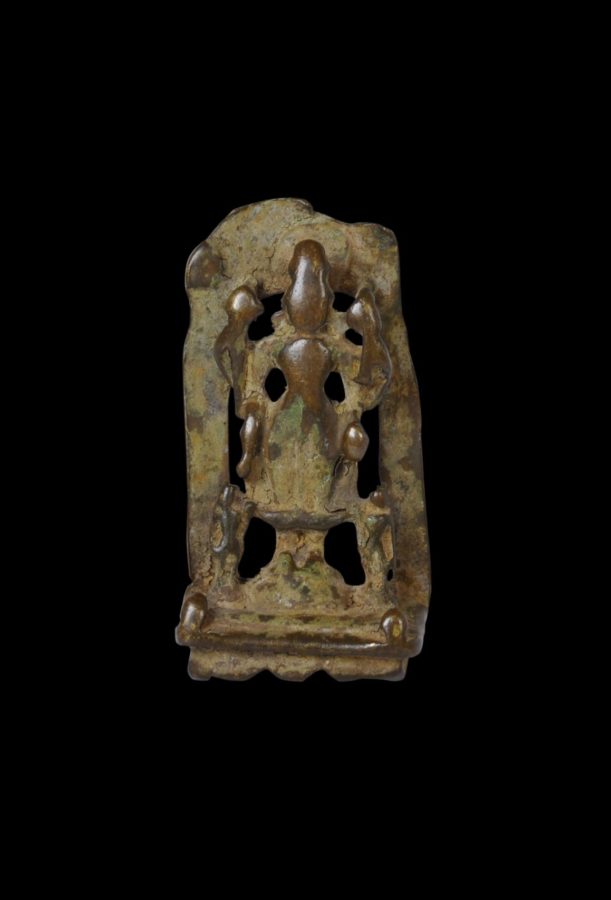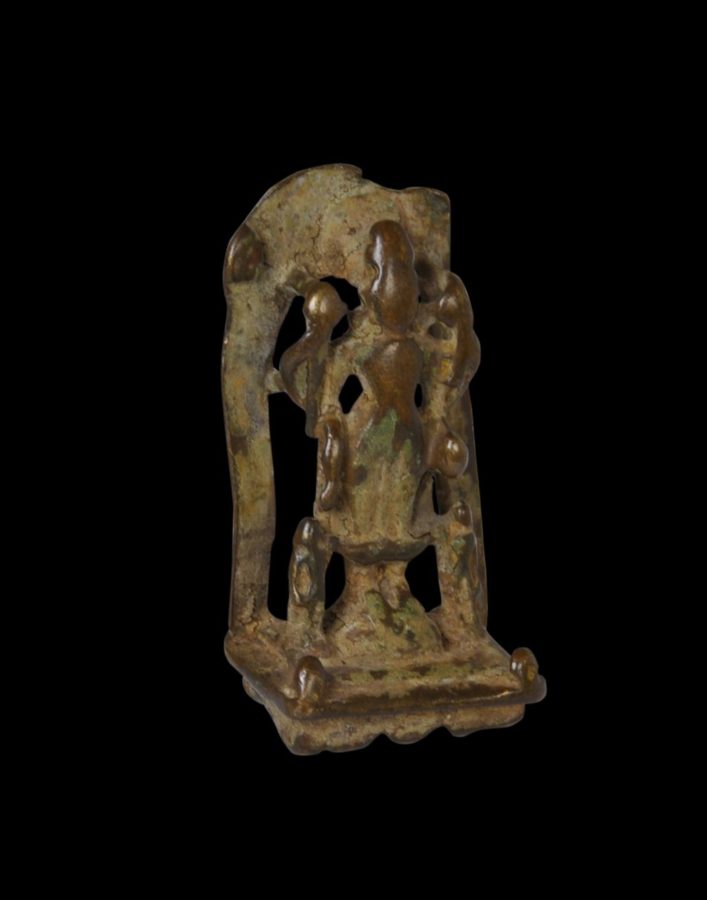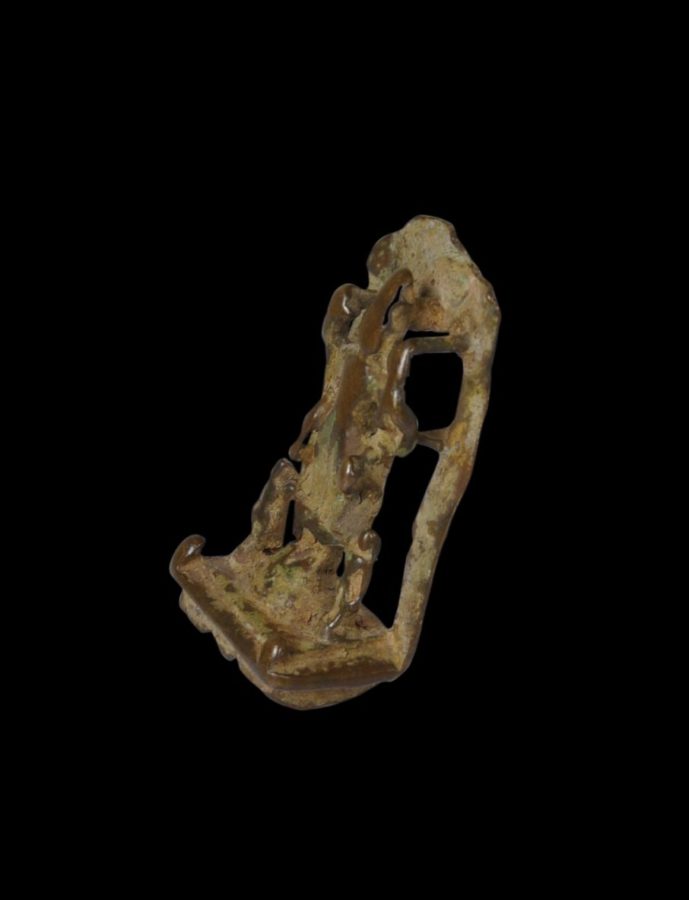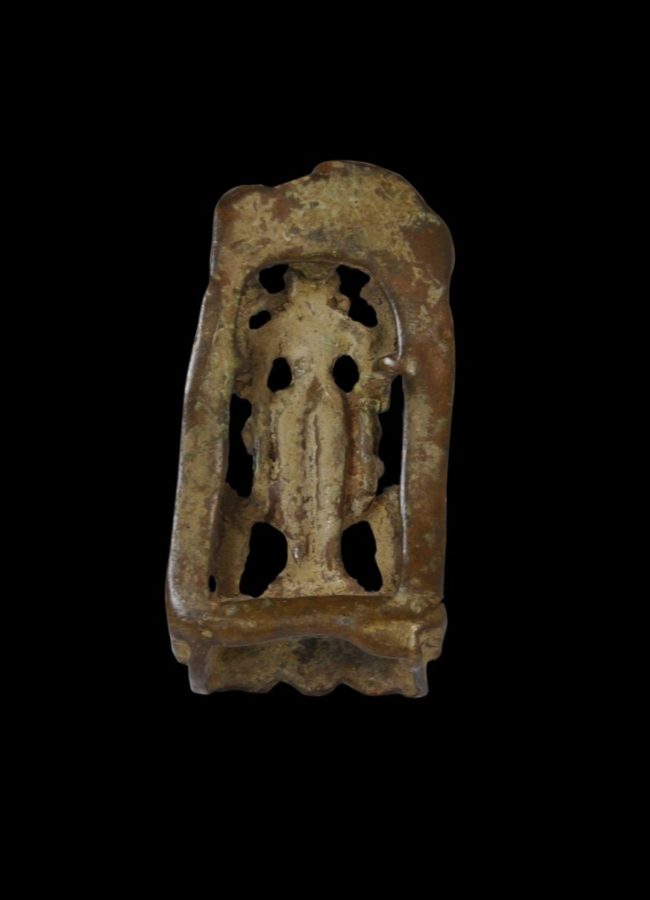The outstanding aspect of this small bronze is the degree to which ritual prayer (puja) wear has worn away its features. The loving caresses and ritualised washing of the piece by many generations of one household has even worn away the back legs of the piece (initially, it stood on four legs) and no longer can stand upright unaided.
The bronze shows a central figure of Vishnu in a particular composition and stance that was popular in ancient Bengal (Pal, 2003, p. 197). It shows a four-armed Vishnu standing on a lotus pedestal on a tiered platform. Vishnu holds a club and a lotus in his upper arms, and is flanked by his two spouses, Sri and Pushti as Saraswati. Both goddesses probably also stand on lotus dais.
The group is backed by a pierced aureole.
The group has been cast in bronze as a single piece. It dates to around the 14th century or before and seems to be in typical Bengal style.
References
Pal, P., Art from the Indian Subcontinent: Asian Art at the Norton Simon Museum, Yale University Press, 2003.





